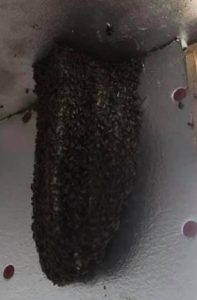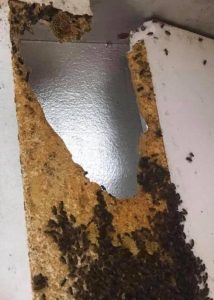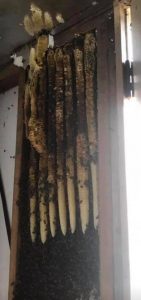Hempstead County Women’s Farm Bureau Committee Spotlights Local Beekeeper Jane Collums
By Staff, 05/3/20 8:53 PMOur very own🐝 “Beekeeper” 🐝Jane got to go rescue a beautiful hive tonite. She successfully got them moved safely into their new home without one sting. If you come across a hive and need it moved she is the woman to call. Bees are an amazing creature the God blessed us with so let’s try to keep them safe.
Bees are flying insects closely related to wasps and ants, known for their role in pollination and, in the case of the best-known bee species, the western honey bee, for producing honey and beeswax. Bees are a monophyletic lineage within the superfamily Apoidea. They are presently considered a clade, called Anthophila. There are over 16,000 known species of bees in seven recognized biological families.They are found on every continent except for Antarctica, in every habitat on the planet that contains insect-pollinated flowering plants.
Bees are adapted for feeding on nectar and pollen, the former primarily as an energy source and the latter primarily for protein and other nutrients. Most pollen is used as food for larvae. Bee pollination is important both ecologically and commercially. The decline in wild bees has increased the value of pollination by commercially managed hives of honey bees.
Human beekeeping or apiculture has been practised for millennia, since at least the times of Ancient Egypt and Ancient Greece. Apart from honey and pollination, honey bees produce beeswax, royal jelly and propolis. Bees have appeared in mythology and folklore, through all phases of art and literature, from ancient times to the present day, though primarily focused in the Northern Hemisphere, where beekeeping is far more common.
Beekeeping is the maintenance of bee colonies, commonly in man-made hives, by humans. Most such bees are honey bees in the genus Apis, but other honey-producing bees such as Melipona stingless bees are also kept







